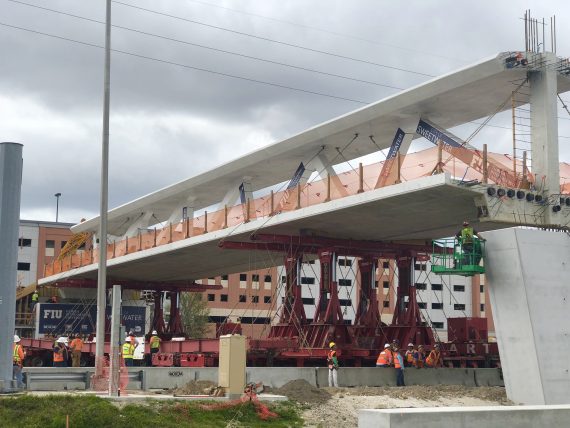On April 4, 2018 at 12:50, Ernie Gilman said...
I heard that explanation. Maybe they could not just make it stiffer.
Imagine a rope pulled tight across a twenty foot length. Imagine wind blowing past it. The rope will vibrate in the middle. Each end of the rope will be a node (a place that is stationary along a vibrating... rope). One would have to pull it maybe four or five times as tight to minimize the vibration.
However, a string in the middle, anchored below the rope and pulling down slightly, will create a node in the middle; there will still be nodes at each end. Sure, each half will then have its own vibration problem, but the relationship of length to tension will be double, the length of each vibrating section will be halved, and the frequency of any oscillations will double, meaning the amount of movement of each half will be smaller. Putting a foot in the middle does WAY more to stop vibration than you'd think it would.
Of course, the Yamaha guy then made the whole thing puzzling by stating that they added a fifth foot to their DVD players and it made things worse. I don't remember just what was worse, but that surprised them more than the fifth foot helping an amplifier.
Having originally studied architecture at an engineering school, I absolutely refuse to believe they couldn't stiffen the chassis if needed.
The vibrating rope (or cable) can be stabilized with a weight or something as simple as a piece of sheet metal that's essentially square and bent across the diagonal and attached in the middle. This is done for power and cable lines between poles in places where high wind speeds are common- it really changes the resonant frequency more than anything but it also modulates the amplitude of the cable's movement. The problem with using tension is that if a cable breaks, the whole thing collapses away from the break, violently.
As far as stiffening a chassis like this, it could be done in many ways- stamping ribs into the bottom, screwing flanges to hold sub-assemblies to the bottom or suspending the top of a vertically-oriented assembly/heat sink from a higher point on the sides and also at the bottom would do a lot to prevent bending (also called 'deflection'. It would act in a similar way to a truss- much less material than a solid beam or joist, but it can support the same amount of vertical load.
BTW- that pedestrian bridge that collapsed at the college in Florida last month- the link shows that the ends don't appear to have been anchored to the ground or some kind of foundation and the reports stated that it was erected very quickly. Quickly, I understand but under-designing it seems to be the cause. It seems that the bottom failed and pulled the ends onto the face that had supported the bridge. This could have been caused by people walking in unison, creating oscillation that coincided with the resonant frequency of the supported span and if that had happened, I would expect people to panic and run. This wasn't the case in this one, since it wasn't open for pedestrian traffic. The rendering I saw showed that the span was flat, with no arch- unless the upper section is supporting the lower and it truly can support that load, it would have been much stronger if it had been arched upward and the ends had been anchored,
as long as the trusses had been designed properly. It appears that the walkway has cables in the concrete- if some of these failed or weren't properly tensioned, it explains why it fell.
[Link: ocregister.com]This link doesn't show much arch to the walkway- the deflection just from gravity would cause the concrete to sag below the ends and that causes the cables to be the sole support mechanism. If it was tensioned AND arched before casting the concrete, it would be much stronger.
 [Link: study.com]
[Link: study.com]WRT the DVD player's fifth foot- you wrote that it does more to stop vibrations than we would think- it also changes the resonant frequency of the chassis and that's probably where they ran into problems- if the foot is hard-mounted, it can transmit vibrations that cause the disc to flutter and if that happens, the laser can't focus. If they had used a foot with some kind of viscous material, I bet it wouldn't have been so bad. I'm surprised they would have this problem- it's so easy to test.

